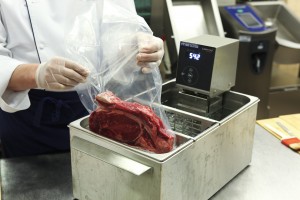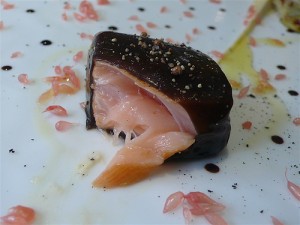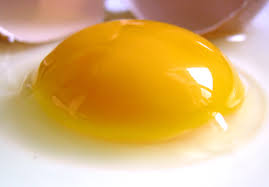By Thomas Parker (regular contributor)
When a dish produced by molecular gastronomy arrives at the table, the atmosphere of attention, expectation, and surprise rivals that of when a magician pulls a rabbit out of a hat. The most exciting culinary trend of the 2000s showcases chefs well known by enthusiasts of the likes of Ferran Adrià, Heston Blumenthal, and Grant Achatz of Chicago’s Alinea restaurant. But what’s behind the molecular magic?
The preparation of the plates is at once scientific, architectural, often jaw-droppingly beautiful, and completely improbable. Foams, spheres, gels, and gases take food presentation to new levels as chefs combine succulent ingredients with scientific method and equipment, using dehydrators, sous-vides, centrifuges, enzymes, emulsifiers, and protein binders to sculpt foods and transform flavors.
Notwithstanding the glitz, molecular gastronomy has been met with some pushback from food purists like Alice Waters of the Slow Food movement. Waters, advocating for simple, natural ingredients and traditional techniques, has referred to molecular chefs as “mad scientists.” But Hervé This, the father of the molecular gastronomy in France, points out that there is really nothing new or unnatural about their preparations. Bringing science into the culinary tradition has existed since nineteenth-century French author Brillat-Savarin advocated for the use of physics and chemistry in the kitchen. Moreover, in some ways, molecular gastronomy is more natural than anything else, since it is premised on understanding and respecting the (natural) laws of science.
Besides, as its proponents never fail to claim, the food is just better. Knowing, for example, the exact temperature at which proteins denature, allows for making the juiciest, most tender meat. And there is safety: you wouldn’t feel comfortable crossing a bridge that engineers hadn’t inspected. Why is it not better to have a chef who understands the scientific principles of cooking making your food?
But even if the flavors are fabulous, the appearance awesome, and the science sound, questions persist. Molecular gastronomy, seen from its worst angle, has been termed misogynist, elitist, and anthropocentric. Harvard Science and Technology scholar, Sophia Roosth has pointed out that molecular gastronomy, whose chefs are mostly men, tend to rethink the same recipes that women have been making successfully for generations (such as the simple pot roast), correcting these women and their methods with science. [1] The subtext is: It took a man armed with reason to correct the follies of women, even in the kitchen.
In terms of class, issues of accessibility have been raised. Any aspiring cook can use Alice Waters’s cookbook to turn out a dish bearing at least a distant resemblance to those in her San Francisco restaurant Chez Panisse. But often times the cost of equipment used by molecular gastronomy chefs, much like the price of eating in their restaurants, amounts to hundreds, if not thousands of dollars. Not exactly democratic eating.
Lastly, but perhaps not least, when the rabbit is pulled from the hat and appears on the plate, eaters are so impressed with the magic they sometimes forget to ask about the rabbit. The energy and confidence of the best scientist-chefs is infectious, but critics argue that the prestidigitations of the laboratory sometimes elide the natural world. In his book, Molecular Gastronomy: Exploring the Science of Flavor (Columbia University, 2008), Hervé This gets granular on cooking the perfect hard-boiled egg. He writes about time, temperature, egg verticality versus horizontality, lipids, proteins, and so on. Nowhere in his instructions, however, does he stress the importance of where the egg was sourced, how the chicken was treated, and what it ate before laying the egg.
Yet, surely the nature of the proteins in the food consumed by the hen on the farm is as important and relevant as the temperature at which the chef denatures them in the kitchen…
[1] “Of Foams and formalisms: Scientific Expertise and Craft Practice in Molecular Gastronomy,” American Anthropologist, Vol. 115, No. 1, pp. 4-16, 2013.






